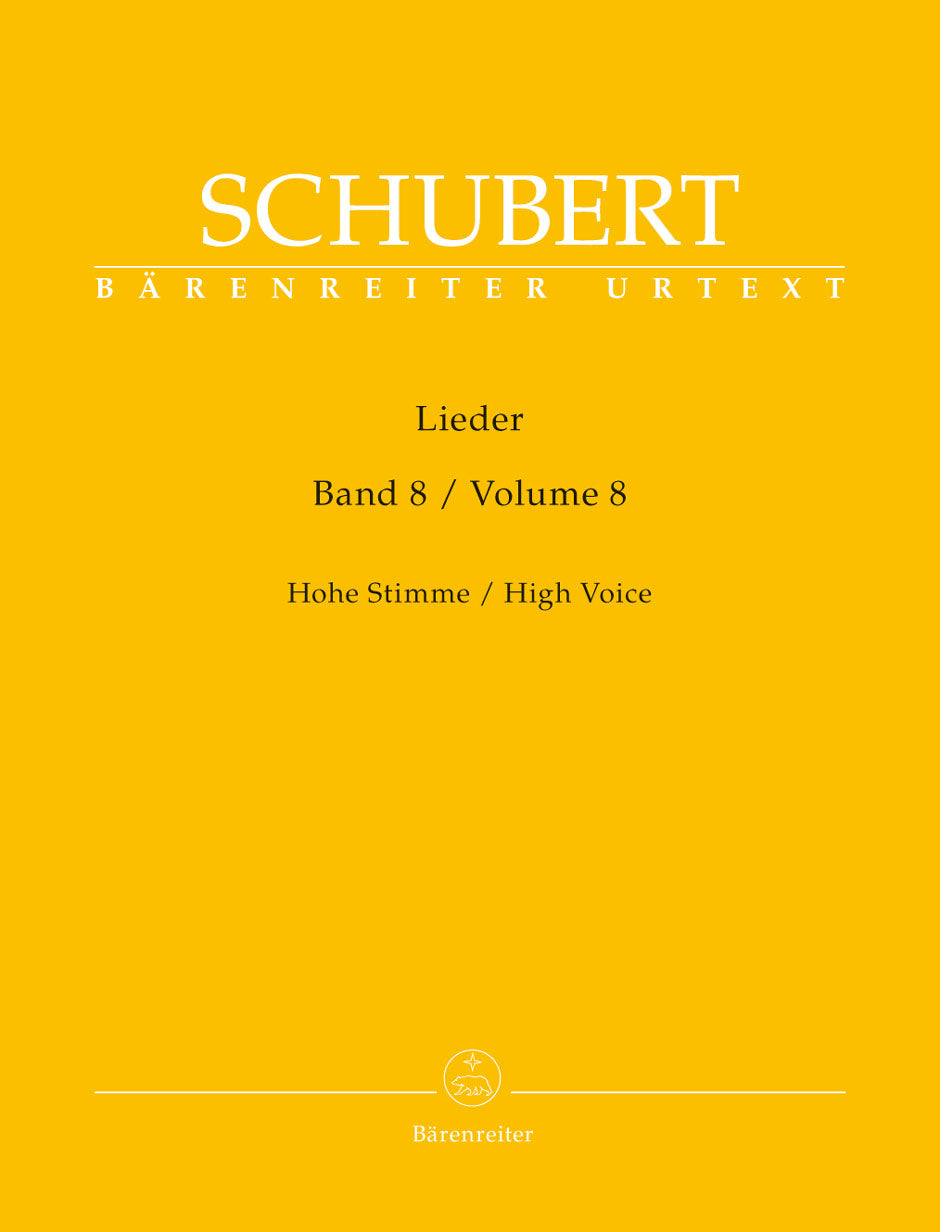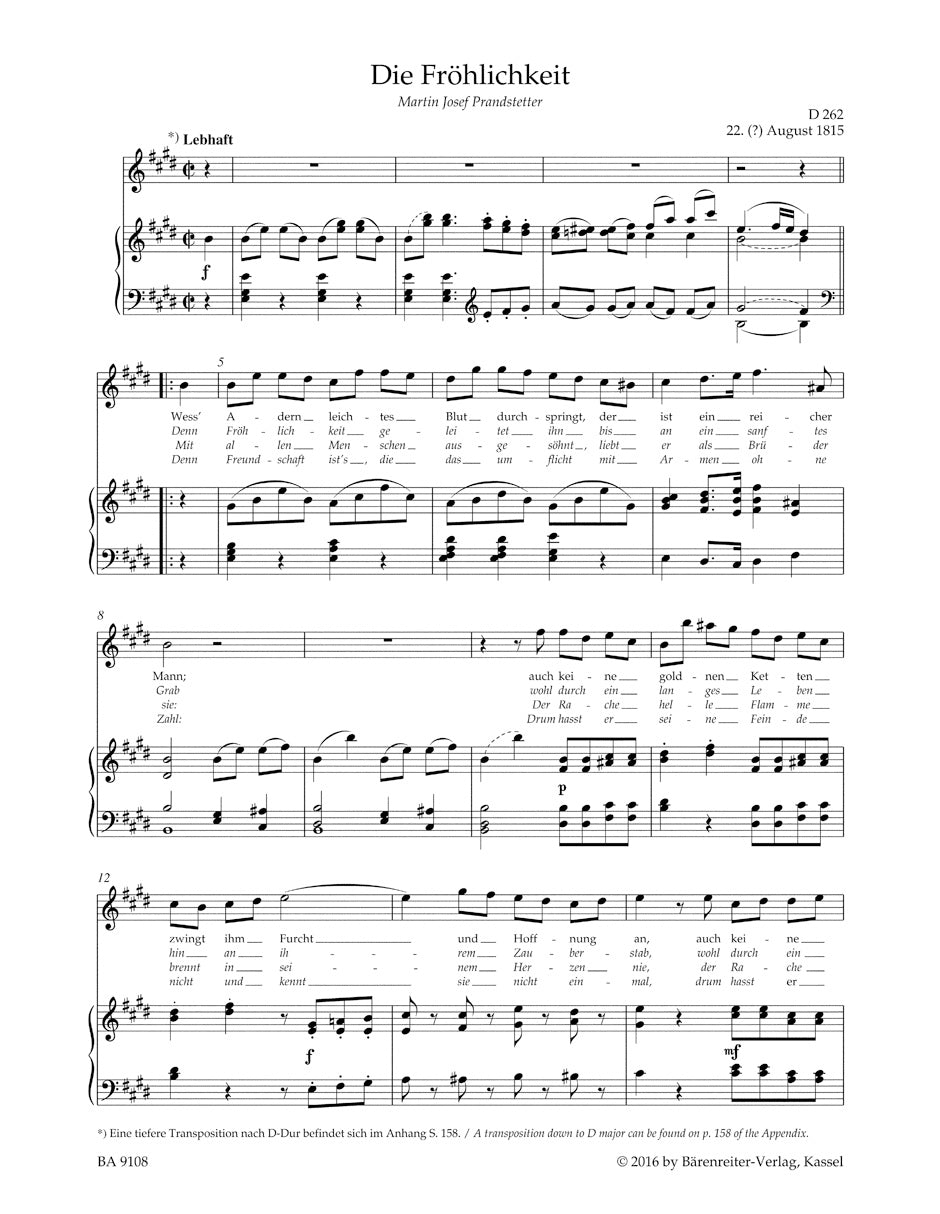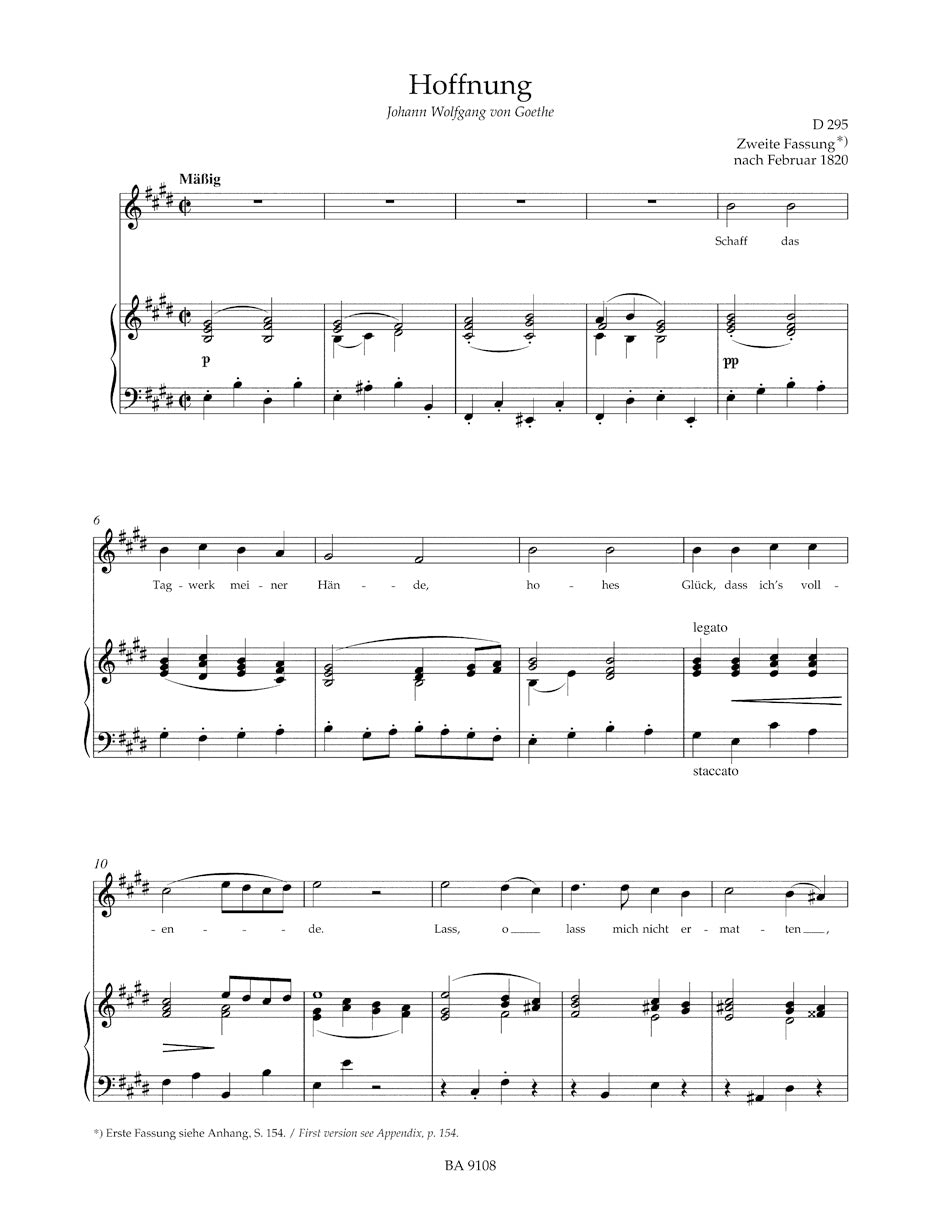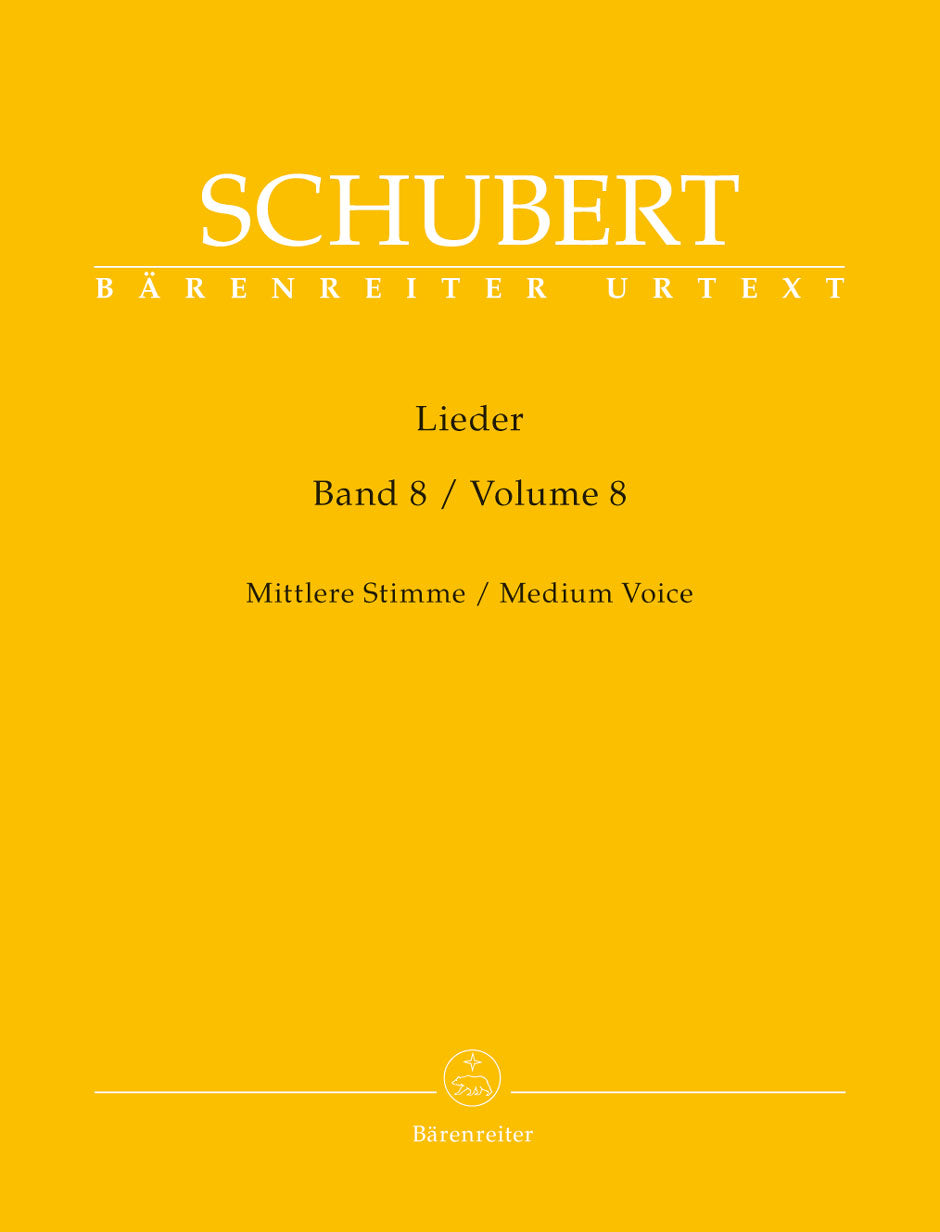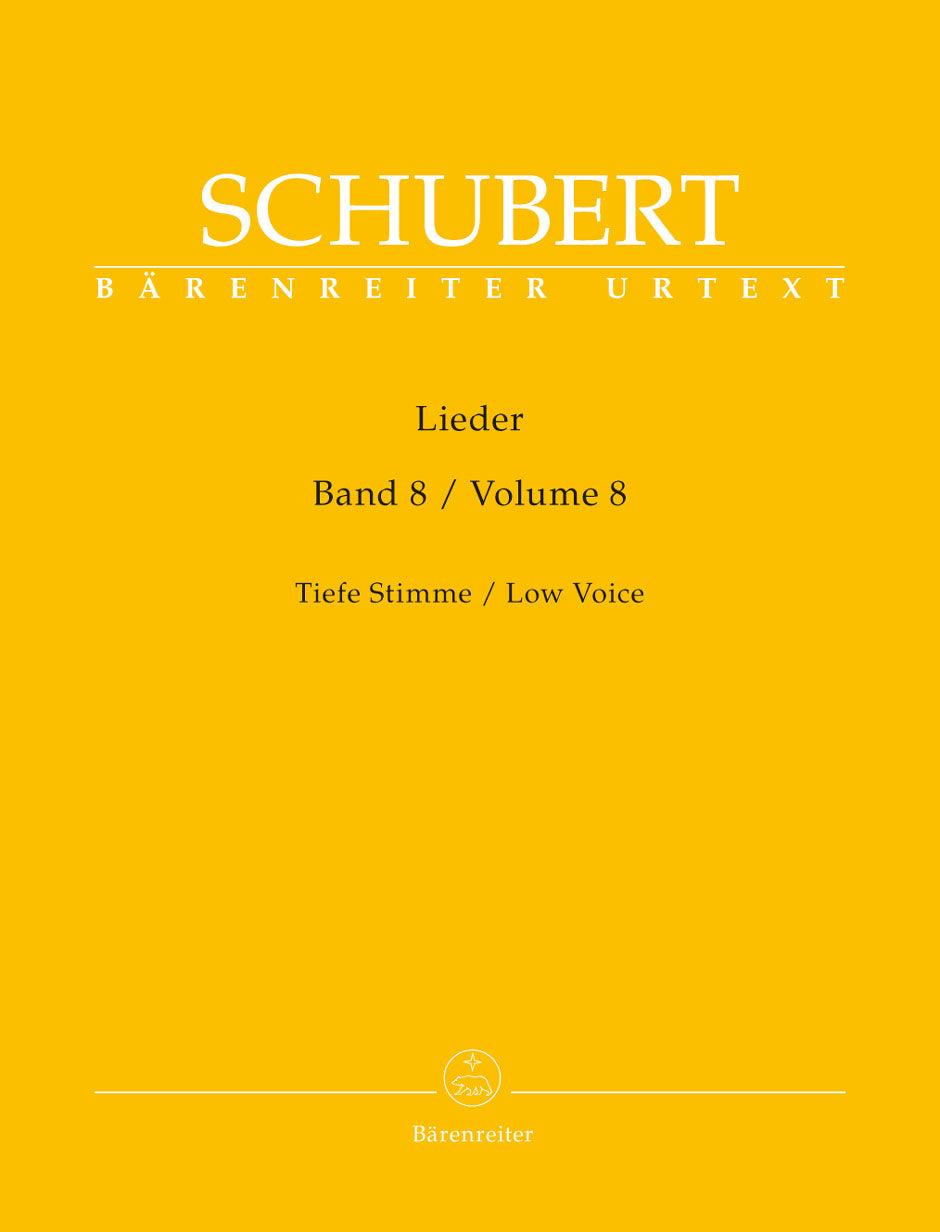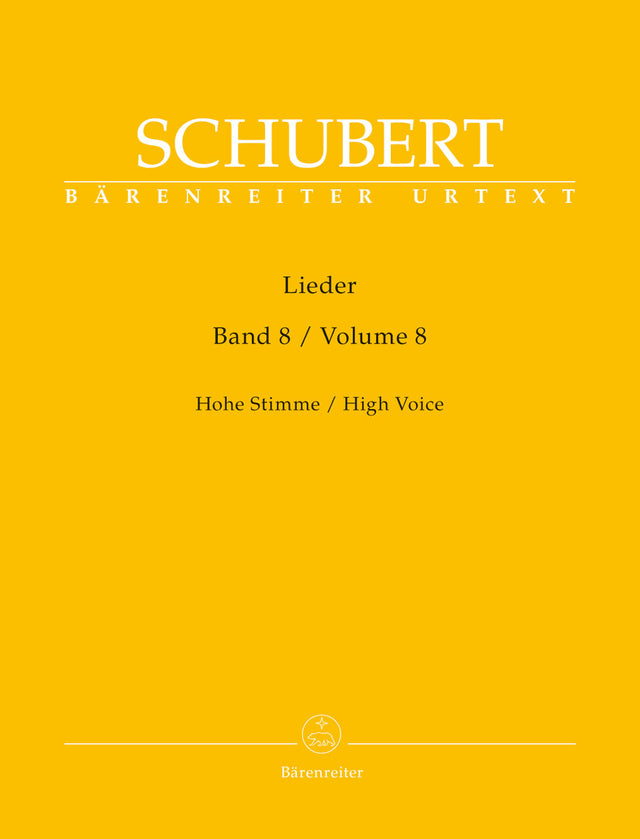Schubert: Lieder - Volume 8
In stock and typically ships within 1 business day.
- Composer: Franz Schubert (1797-1828)
- Editor: Walther Dürr (1932-2018)
- Instrumentation: Piano, Voice
- Work Language: German
- ISMN:
- Size: 9.1 x 11.8 inches
- Pages: 167
- Urtext / Critical Edition
Description
Walther Dürr presents Volume 8 of the new Urtext edition of Schubert's lieder in separate editions for high, medium and low voice.This volume contains lieder originating during the latter half of 1815, between August and November. Three series of lieder, each based on a particular poet, immediately catch the eye: a number of Ossian settings, a group of Klopstock lieder and finally another set on texts that Schubert found in a Viennese almanac (Selam). Furthermore, the series of Schubert lieder on texts by the North German poet Ludwig Theobul Kosegarten which starts in Volume 7, is concluded in this volume.
Works:
- Die Fröhlichkeit, D 262
- Cora an die Sonne, D 263
- Der Morgenkuss (1st version), D 264
- Abendständchen. An Lina, D 265
- Morgenlied, D 266
- An die Sonne ("Sinke, liebe Sonne"), D 270, Op. posth. 118, No. 5
- Der Weiberfreund, D 271
- An die Sonne ("Königliche Morgensonne"), D 272
- Lilla an die Morgenröte, D 273
- Tischlerlied (1st version), D 274
- Totenkranz für ein Kind, D 275
- Abendlied, D 276
- Ossians Lied nach dem Falle Nathos (3rd version), D 278
- Das Rosenband, D 280
- Das Mädchen von Inistore (2nd version), D 281
- Cronnan (2nd version), D 282
- Lied, D 284
- An Cidli [Furcht der Geliebten] (2nd version), D 285
- Selma and Selmar (2nd version), D 286
- Vaterlandslied (2nd version), D 287
- An Sie, D 288
- Die Sommernacht (2nd version), D 289
- Die frühen Gräber, D 290
- Dem Unendlichen (3rd version), D 291
- Shilric and Vinvela (2nd version), D 293
- Hoffnung (2nd version), D 295
- An den Mond (1st setting), D 259
- An den Mond (2nd setting), D 296
- Augenlied (2nd version), D 297
- Liane, D 298
- Der Jüngling an der Quelle, D 300
- Lambertine, D 301
- Labetrank der Liebe, D 302
- An die Geliebte, D 303
- Wiegenlied, D 304
- Mein Gruß an den Mai, D 305
- Skolie, D 306
- Die Sternwelten, D 307
- Die Macht der Liebe, D 308
- Das gestörte Glück, D 309
- Die Sterne, D 313
- Nachtgesang (2nd version), D 314
- An Rosa I (2nd version), D 315
- An Rosa II (2nd version), D 316
- Idens Schwanenlied (2nd version), D 317
- Schwangesang, D 318
- Luisens Antwort (2nd version), D 319
- Der Zufriedene, D 320
- Mignon (2nd version), D 321
- Hermann and Thusnelda (2nd version), D 322
- Klage der Ceres, D 323
- Der Morgenkuss (2nd version), D 264
- Tischlerlied (2nd version), D 274
- Vaterlandslied (1st version), D 287
- Hoffnung (1st version), D 295
- An Rosa II (1st version), D 316
Publishers use a lot of words to describe what they sell, and we know it can be confusing. We've tried to be as clear as possible to make sure you get exactly what you are looking for. Below are descriptions of the terms that we use to describe the various formats that music often comes in.
Choral Score
A score for vocalists that only contains the vocal lines. The instrumental parts are not there for reference. Generally, cheaper than a vocal score and requires multiple copies for purchase.
Facsimile
Reproductions of the original hand-written scores from the composer.
Full Score
For ensemble music, this indicates that the edition contains all parts on a single system (there are not separate parts for each player). In larger ensembles, this is for the conductor.
Hardcover
Hardbound. Generally either linen-covered or half-leather.
Orchestral Parts
Similar to a wind set, this is a collection of parts. In the case of strings, the numbers listed are the number of copies included, though generally these are available individually (often with minimum quantities required).
Paperback
When publishers offer multiple bindings (e.g. hardcover) or study scores, this is the "standard" version. If you're planning to play the music, this is probably what you want.
Performance / Playing Score
A score of the music containing all parts on one system, intended for players to share. There are not separate parts for each player.
Set of Parts
For ensemble music, this indicates that there are separate individual parts for each player.
Solo Part with Piano Reduction
For solo pieces with orchestra, this is a version that contains a piano reduction of the orchestra parts. For piano pieces, two copies are typically needed for performance.
Study Score
A small (think choral size) copy of the complete score meant for studying, and not playing. They make great add-ons when learning concertos and small chamber works.
Vocal Score
A score prepared for vocalists that includes the piano/organ part or a reduction of the instrumental parts.
Wind Set
For orchestral music, this is a collection of wind and percussion parts. The specific quantities of each instrument are notated.
With Audio
In addition to the printed music, the edition contains recordings of the pieces. This may be an included CD, or access to files on the internet.
With / Without Fingering (Markings)
Some publishers prepare two copies - a pure Urtext edition that includes no fingering (or bowing) suggestions and a lightly edited version that includes a minimal number of editorial markings.

